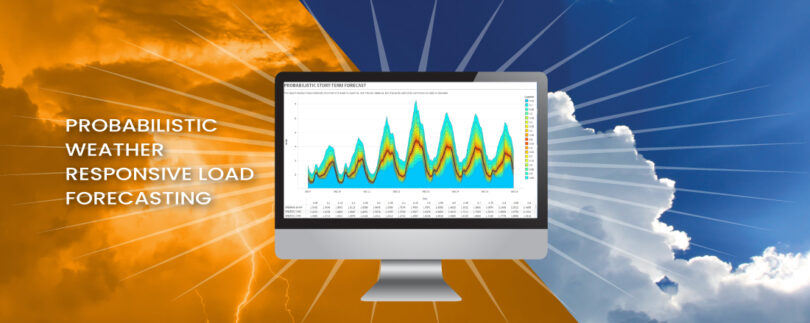Weather Forecast Accuracy, the Ever-Present Challenge for Suppliers
How Probable is it That Your Load Forecast is Wrong?
The past cold snap in Texas brought back a few memories of the winter and summer black swan events in ERCOT the past couple of years. The importance of weather norms and accurate forecasts are critical to the energy industry and energy suppliers have their own approach to weather-based hedging and associated risk tolerance.
The big problem is that rarely does the weather behave “normally” and rarely are weather forecasts spot on to the exact degree. Most energy retailers have a general understanding of how their energy load is affected by certain swings in temperature from what is forecasted. However, very few understand the “likelihood” a certain temperature differential will take place and, thus, the probability that the load will differ in a way to impact your position negatively.
Enter Probabilistic Load Forecasting
Probabilistic weather responsive load forecasting is an emerging concept that provides suppliers early warning that their short-term hedging may need to be adjusted, before falling prey to the day ahead or on-demand markets. We all get hunches and, with experience over time, hunches can improve to educated guesses. Probabilistic load forecasting, however, is based on quantifiable data.
“Probabilistic load forecasting is an emerging concept that provides suppliers early warning”
By analyzing years of historical weather data from multiple sources, along with associated forecast variability, differential patterns emerge which allow suppliers to better model the accuracy of a weather forecast, starting from two weeks out and adjusting as the date nears and forecasts adjust.
From the probabilistic weather forecast, it is then possible to build out a probabilistic load forecast for a supplier’s own customer load, based on bands of confidence. This is especially useful if load forecasts are derived from actual meter-level data. From there, load decisions can be made based on a company’s own risk comfort level… but much better informed with data, not intuition.
Key benefits:
- More efficient short-term hedging, especially when prices are vulnerable to increases
- Get the jump on the competition with earlier and accurate pricing
- Greater peace of mind
In the following example, probabilistic load forecasts are provided at different confidence levels for supply managers to apply their company’s tolerance for risk. When overlayed on hedging, a much more informed decision can be made. Probabilistic load forecasting can also be viewed in hourly confidence intervals.

Use Consistently, Not Just for Warning of Black Swan Events
Although it can be a great asset during major weather events, probabilistic forecasting is likely to have a greater overall fiscal impact when used consistently throughout the entire year. The minor weather forecast errors add up. The larger a supplier’s load obligation, the larger the fiscal impact. Consistent pennies saved can possibly equate to significant gains over time.
This article is not to say that the use of probabilistic load forecasting eliminates risk. It’s just the next logical step in mitigating risk. When used correctly, probabilistic load forecasting can help supply managers make better-informed decisions to positively impact a supplier’s bottom line.
By Daniel Cross, Senior Director of Load Forecasting at POWWR




